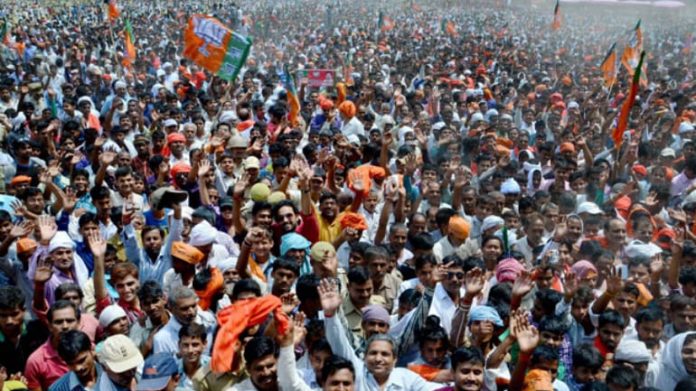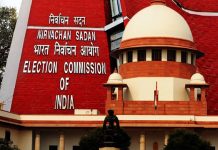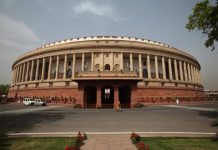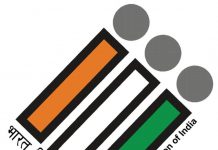This article is written by Upasana Dash, currently pursuing BA LLB (Hons.) from Madhusudan Law College, Odisha. This article is based upon a comprehensive analysis of the model code of conduct during the elections.
Table of Contents
Introduction
As per the Doctrine of Basic Structure, India is a democratic country. It is a form of government where the power of the State is legally vested upon members of the community as a whole in the exercise of sovereign power. So the election process must be based upon free, fair, regular, and timely election. In governance to these principles, certain guidelines are provided during elections, which is called the Model of Code of Conduct.
In 2014, the Election Commission had held that Narendra Modi had violated the provisions of the Model Code of Conduct that prohibits anyone from canvassing within 100m of the polling booth. On the order of the Election Commission, the Gujarat police had filed two FIRs against him.
In 2017, Rahul Gandhi was alleged by the Election Commission, for his television interview a day before the final phase of the voting in Gujarat. The Election Commission has directed the Chief Election Officer of Gujarat, BB Swain to file an FIR against channels in the state that telecast Rahul Gandhi’s interviews.
Sarita Choudhary, a BJP leader during her election campaign, had posted photos of Wing Commander Abhinandan on her posters. The Election Commission has ordered it to be taken away. As per the general advisory announced on 4th December 2014, by the Election Commission, that the leaders and candidates are strictly prohibited to show any photographs of defence personnel or functions involving them in the advertisements or otherwise as a part of their political propaganda. The Commission has confronted the advisory that “Armed Forces of a country are the guardian of its frontiers, security and the political system.”
What is the Model Code of Conduct during elections
In the process of making government, power comes to play a major role. To govern this competition in a healthy procedure ensuring peace and order, there must be certain guidelines. Subsequently, to regulate political parties and candidates, to ensure free, fair, regular, and timely election, the Election Commission has imposed a set of rules and regulation, that is referred to as the Model Code of Conduct during elections.
These guidelines are morally bound i.e not legally enforceable, indirectly punishable. It was first introduced in 1960, in Kerala in the State Assembly Election. It had been started on an experimental basis. In 1962, general election to the Lok Sabha, Model Code of Conduct was circulated to recognized parties, and the government sought feedback from the parties. Model Code of Conduct was largely followed by the parties in the election and so continued to the subsequent election.
Initially, there were six Model Code of Conduct, later on, the Election Commission added “Power of Parties” in 1979 and the direction of the Supreme Court, in 2013. “Election Manifestos”. So Model Code of Conduct contains eight guidelines in total, 6 original and 2 added further. They are as follows:
General conduct
Criticism of political parties must be limited to its lack of ability, policies, and programs. It must not be based upon:
(1) caste or communal feelings;
(2) unverified reports, bribing or intimidating the voters;
(3) organizing demonstrations of protests outside houses of persons against their opinions.
Meetings
Parties or candidates must inform the police or the local authorities of the venue and the time of meetings by the course of a campaign or networking to make security arrangements.
Processions
To constitute a rally or procession, if two or more parties go along with one route, they should maintain proper coordination and harmony. So that the processions do not clash. Burning effigies of opposition parties are not allowed.
Polling day
Identity badges should be given to the authorized party workers on polling day. These should not contain the party name, symbols, or name of the candidates.
Polling booth
Only the voters are allowed to the polling booth, all the political parties shall stay outside the booth. It is against the Representation of Peoples Act, 1951.
Observer
The Election Commission will allow observers to whom any candidate reports problems regarding the conduct of the election.
Party in power
Normally, the ruling party has multiple such advantages based on which it can arrange several meetings, probably the opposition party can not do it. And releasing monetary schemes, advertisements, or promises for construction of roads to influence the psychology of voters in the last minutes, during the election. Such activities by the political parties or any of the candidates should be avoided.
However, in contrast to these guidelines, in the 2019 election, there had been some advertisements by certain political parties, in the confrontation, they claimed that they had booked before for the advertisements, but coincidently got released during the election.
Election manifesto
Making any promises for schemes to create an undue influence on the vectors irrationally should be prohibited.
Objective
The main purpose of the Model Code of Conduct is to ensure that any political party must not misuse their power to take advantage during the election. There must not be any clash between the parties. Free and fair polls should be maintained. There must not be undue influence, compulsion, the threat of danger to body or property, or bribing the voters. Politicians should not deliver any hate speeches or advertisements. Facebook, tweeter need to be controlled for the promotion of any party. Whatsoever, there is no restriction for Whatsapp.
No political parties can campaign based on caste or communal defamation or influence on voters. All candidates are answerable for such conduct of acts. Ministers should not give unverified reports against opposition parties.
During the procession, there should not be any hindrances to public roads by the political party’s rally. Candidates should not promise any kind of welfare program during the election. For meetings, public places must not be monopolized by the ruling party.
Limit and scope
Model Code of Conduct is a set of “Dos and Don’ts”, not judicially bound rules which regulate election meetings, speeches, and slogans. The Election Commission aimed to change the Model Code of Conduct and hold back political parties from publishing their manifestos 72 hours before the delay in polling due to a lack of consensus among political parties
The Model Code of Conduct applies to both the elections of Lok Sabha and the State Legislative Assembly as well. The Model Code of Conduct is criticized that it is not enforceable by law. However, certain provisions of the Model Code of Conduct may be enforced through invoking corresponding provisions of the statutes such as the Indian Penal Code, 1860, Section-125, and Section-153A, of the Representation of Peoples Act, 1951, and the Code of Criminal Procedure, 1973.
Constitutional validity
The Election Commission ensures that the political parties adhere to the Model Code of Conduct to carry out free and fair polls under Article-324 of the Constitution. In the case of intimidation, undue influence, the Election Commission takes action against violators. People can directly complain to the Election Commission through the cVIGIL mobile application by audio-visual proof of such offences. The Model Code of Conduct has been criticized as a toothless tiger and a farce because the Election Commission does not enjoy the enforcing power and control of the administrative authority beyond the election. Once the election results are announced, suddenly it becomes constitutionally impotent and weak to take charges of the electoral offences for which the FIRs had been filed, to their logical ends of prosecution and the conviction.
Impact of model code of conduct
There are several impacts of the Model Code of Conduct are outlined below:
- To carry out free and fair election;
- To maintain peace and order during the election;
- Avoid clash between candidates and political parties;
- Prohibits religious and communal biased votes;
- Helps chaos-free public road during election due to the guidelines that any rally or procession should not block public roads;
- Violence free election;
- No fake promises for construction of roads and buildings for the sake of getting votes;
- To maintain peace at the polling booth;
- It gives scope to register a complaint through the cVIGIL mobile application;
- The ruling party is not allowed to monopolize public places or halls for meetings.
Issues and challenges
The vital is that the Model Code of Conduct is not judicially bound, the Election Commission says that more than three crores cases are pending in the Supreme Court, and the duration of the election is about 45 days. So delaying the case hearing chances are there, in consequence of the case proceedings, political parties can not take their charges. Every case is a mere acquisition till the conviction is held. So judicial delay is one of the major challenges in this regard.
Critical analysis
The efficacy of the Model Code of Conduct in the modern scenario are outlined below:
Difficult to monitor in the world of social media. Social media can be a great influence on voters. cVIGIL mobile application is made to register the voter’s complaints regarding violation of the guidelines or any kind of offences in an election.
All candidates are required to give details of their social media accounts to the Commission and the approval for all the advertisements on social media. Moreover, the Model Code of Conduct applies to social media content. The Commission has also set up media certification and monitoring committees for every district to counter paid news and media related violations of the Model Codes. Facebook, Google, Twitter, and YouTube have to ensure that all political ads on their platforms are pre-certified by these committees, each of which will include a social media expert. Whatsapp is excluded from these groups. India has no guidelines for issues-based advertising, which means promoting political issues that could influence people to vote for a political party. It should bring to the ambit of the Model Code of Conduct.
Recommendations
Despite all the guidelines of the Model Code of Conduct, the political parties offend those guidelines because it is not judiciary bound. The Model Code of Conduct is completely based upon moral obligation. The guidelines need to be more rigid so that every candidate will strictly follow. The consensus among candidates needs to be more strong to maintain peace and order during elections. No political parties promise for fake construction of roads or buildings, it gives fake hopes to the voters. Violence causing strikes and speeches need to be prohibited because it harms public property as well as the peace of citizens. In the era of social media, the typical guidelines of the Model Code of Conduct should be amended to a certain extent.
Important case laws
In K.G. Uthayakumar v. The State on 7th January 2015 it was held that the accused person had violated the Model Code of Conduct of Election by staying at the Public Works Department’s building. He had committed an offence under Section-171 of the Indian Penal Code i.e an election offence, under Section-154 of Criminal Code of Procedure; anybody can give a complaint to Police Station, District Collector, and the Revenue Division Officer in this matter.
In M.V Nikesh Kumar v K.M Shaji on 9th November 2018, the petitioner was on the belief that the respondent being a Muslim candidate and his party member were approached to voters from the Muslim community based on religion. They had circulated the Muslims promoting brochures to gain more votes in their campaign. As a consequence of this, the respondent won the election. Hence under Section-100(1)(b) and Section-100(1)d(ii) of the Representation of Peoples Act, 1951, the respondent held liable to be declared as void and the petitioner has been duly elected.
In K.K Ramesh vs National Human Rights Commission on 26th March 2019, the candidate had established temporary flex boards and established temporary Dias, for public meetings, by creating hindrance to traffic. The court held that he is liable for violating the guidelines of the Model Code of Conduct.
Conclusion
Since 1962, the Model Code of Conduct has been followed successively. But in the last few years, social media is trending and the political aspects of India have also been upgraded. The Election Commission needs to reconstruct certain guidelines of the Model Code of Conduct.
References
- Constitution of India,
- Firstpost,
- The Representation of The People Act, 1951,
- The Election Commission of India.
LawSikho has created a telegram group for exchanging legal knowledge, referrals and various opportunities. You can click on this link and join:
 Serato DJ Crack 2025Serato DJ PRO Crack
Serato DJ Crack 2025Serato DJ PRO Crack











 Allow notifications
Allow notifications


